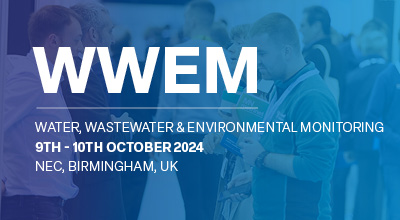| Abstract Title: | Chemcatcher passive sampling: Solving the conundrum of micropollutants |
| Presenter Name: | Mr John McGrath |
| Company/Organisation: | T. E. Laboratories Ltd |
| Country: | Ireland |
Abstract Information :
This review illustrates the use of Chemcatcher® passive samplers for the detection of a variety of micropollutants, as a tool in the management of catchment areas as well as providing data on the fate of micropollutants. rnAs pesticide pollution/contamination incidents increase in ground water and surface water, water companies across Europe can have difficulties with acid herbicides like MCPA (4‐chloro‐2‐methylphenoxy acetic acid) and 2,4-D (2,4-Dichlorophenoxyacetic acid, 2,4-D) in drinking water sources and in the drinking water itself. Despite their common usage in agriculture, there are significant gaps in knowledge about the fate and impact of these acid herbicides in the environment. This is not only an issue for water companies but for agencies responsible for water quality of rivers and lakes and for agricultural catchment management. rnIndeed what happens to the herbicides in the environment can depend on a complex range of factors, e.g. soil type, structure, pH, microbiology and moisture levels, as well as the formulation and the time of application of the pesticide.rnAs MCPA is very soluble, it moves very quickly in flashy conditions. So, if there is a reliance on grab sampling, the likelihood is that increases are missed. With Chemcatcher®, a time-weighted average concentration, distributed over a 14-day period is provided. Additionally, Chemcatcher® enables detection at lower levels than traditional sampling. rnOther environmental problems that Chemcatcher® passive samplers have been applied include contamination of the the North and Baltic Seas with the hazardous components of conventional warfare. The most hazardous constituent is trinitrotoluene (TNT) and its degradation products trinitrobenzene (TNB) and amino-dinitrotoluene (ADNT). Mercury, methyl mercury and lead are present in trigger units and explosive capsules. These compounds are known to have a toxic effect on aquatic organisms, such as sea urchin, crayfish and green algae. rnProjects aimed at safely disposing of these munitions need to know the location, quantity and type of munitions on the sea floor. Chemcatcher® samplers have been applied to this problem: firstly, to prove that explosive-typical compounds exit the sunk munitions, and, secondly, to determine a time-weighted average concentration in the water. rnOne of the advantages of using the passive samplers, in this case, is that, unlike biota, they will not metabolise the explosive compounds. Therefore, it is possible to categorically state whether - and in what proportion - TNT and its degradation products occur in the water column.rnWith the information provided by Chemcatcher® monitoring, this review shows how Chemcatcher can provide information to understand the fate of micropollutants while also enabling catchment managers, researchers and agencies to develop effective mitigation measures to reduce adverse effects from micropollutants.rn


